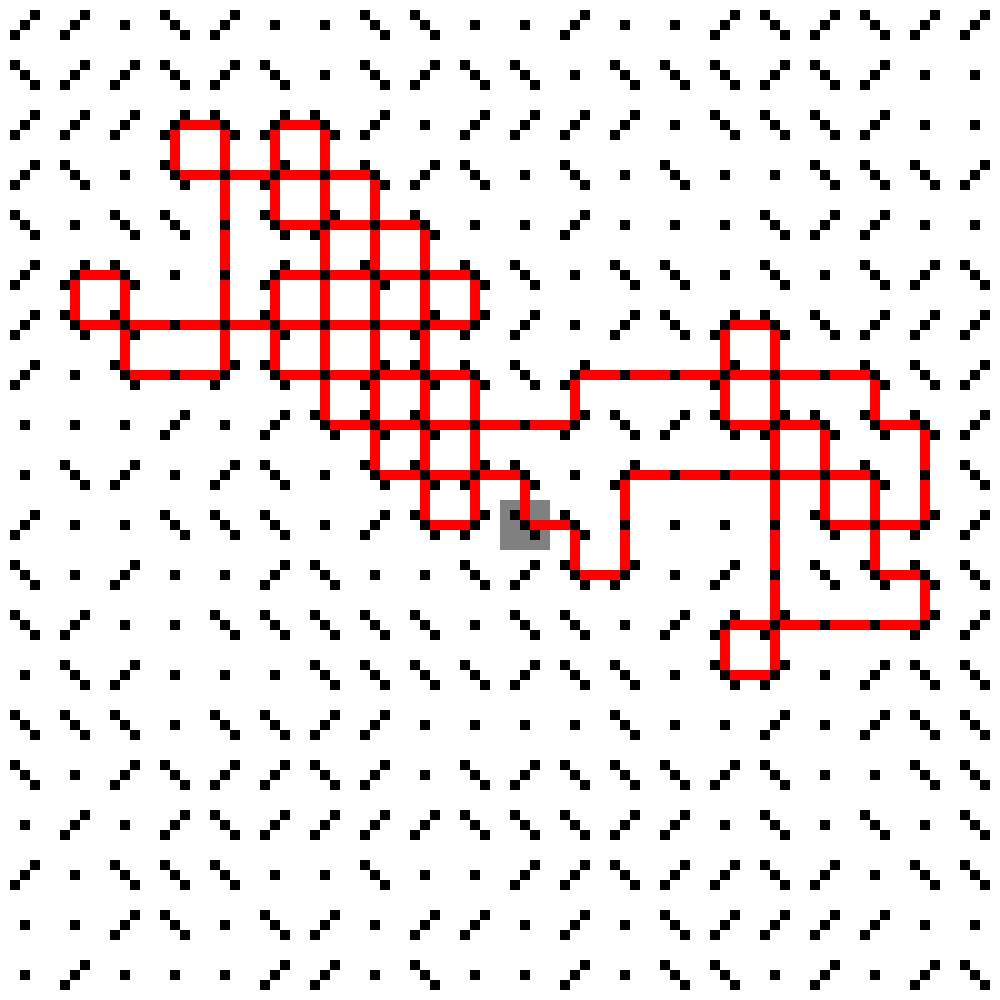Mostly Misaligned Mirrors (#215)
Recently, my stochastic professor introduced me to a problem he has been pondering for over two decades: on the two-dimensional integer lattice one shall flip a three-sided coin for each point and uniformly place one of three mirrors,
, where
denotes not placing a mirror. After having populated the world, one picks their favorite integer tuple and points a beam of light in one of the four cardinal directions. With what probability does the light fall into a loop, never fully escaping?

-=-
With me almost surely not being able to solve this problem thru proof, I took the route of silicon-assisted problem analysis: simulation. However, even on very large lattice segments, the beam often either escapes or exists only for a very short time — as seen above.
Source code: mostly-misaligned-mirrors_visualize.py, mostly-misaligned-mirrors_simulate.py
An example of a rather intricate path which eventually escapes the chosen view:

After seeing the beams often escape my view frames, I decided to also simulate the problem without visualization — both to potentially get a performance increase as well as to lift the constraints of finite imagery. My results for running ten simulations are as follows:
$ python mostly-misaligned-mirrors_simulate.py 10 [X] Exceeded the maximum visited mirrors threshold of 1000000. [X] Exceeded the maximum visited mirrors threshold of 1000000. [.] Visited 5110 mirrors before falling into a loop. [X] Exceeded the maximum visited mirrors threshold of 1000000. [.] Visited 4 mirrors before falling into a loop. [X] Exceeded the maximum visited mirrors threshold of 1000000. [X] Exceeded the maximum visited mirrors threshold of 1000000. [X] Exceeded the maximum visited mirrors threshold of 1000000. [X] Exceeded the maximum visited mirrors threshold of 1000000. [X] Exceeded the maximum visited mirrors threshold of 1000000.
One can clearly see that whilst some paths are of minuscule lengths, others far exceed those, traversing over a million mirrors until getting stopped as to not fry my machine.
My professor’s conjecture states that any given mirror configuration almost surely — meaning with probability 1 — causes the beam of light to fall into a cycle. In some sense it appears intuitively clear — escaping requires an infinite amount of mirrors to be placed correctly, however: could the beam also find a sneaky way around a lot (in the sense of being of non-vanishing measure) of configurations, squeezing elegantly and indefinitely around all obstacles? After running my simulations doubts in the former increase, leaving me cluelessly in the dark, waiting for a proper proof to be formalized.